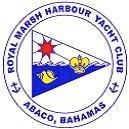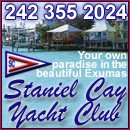Bahamas Chatter: Big Changes in Explorer Electronic Data Availability
Explorer Chartbooks, A CRUISERS NET PARTNER, has long been the standard navigational supplement for enjoyable, informative, and safe cruising through the beautiful Bahamian waters and island visits.
Big Changes in Explorer Electronic Data Availability
February 2019 introduces some changes in the sources of data being used for electronic navigation in the Bahamas. If you have come to rely on the accuracy of the Explorer chart data, this is important information for you. If you are planning a trip to the Bahamas in the near future, you may need to make some changes right now to assure that you go with the best chart data.
One of the recent developments causing a shift is that Garmin has purchased Navionics.
Garmin has announced that its new g3 marine electronics offerings will contain only Navionics data for the Bahamas. With this February 2019 issue, Garmin will no longer make Explorer Bahamas data available to its customers. The g3 will be included in the g3 accessory cards and pre-loaded chart plotters.
The Explorer data is still available on g2 accessory cards (Garmin) and earlier pre-loaded chart plotters which may be in inventory for a few more weeks. Although the release of the new g3 material has already begun, customers desiring Explorer data still have an opportunity to upgrade their g2 cards.
If you haven’t upgraded your Garmin for awhile and don’t have the g2 data, we urge you to call Garmin or visit your marine electronics store to insure that you travel to the Bahamas with the tried and true Explorer chart data.
Other avenues for insuring Explorer-only data is to go with C-Map by Navico products and its affiliates SIMRAD, LOWRANCE, and B&G. Also, chart data through MapMedia, MaxSea, Nobeltec, Standard Horizon, RosePoint Coastal Explorer, and Furuno can be trusted to use Explorer vector and raster information. If you are using RayMarine hardware, please inquire of the company as Explorer data is available but not on all units.
There are also three new apps for phone/tablet that now include Explorer-only raster data. Check out AquaMap and iNavx. Links below:
Aquamap links
iTunes
https://itunes.apple.com/us/app/aqua-map-marine-boating-gps/id919552329?mt=8
Google Play
https://play.google.com/store/apps/details?id=com.gec.MarineApp.WorldViewerLite
iNavX links
Itunes
https://itunes.apple.com/us/app/inavx-marine-navigation/id286616280?mt=8
Google Play
https://play.google.com/store/apps/details?id=com.gpsnavx.iNavX
Embark (by C-Map) links
Itunes
https://itunes.apple.com/us/app/embark-your-nautical-charts-for-boating/id967289980?mt=8&ct=stylum.teamworkpm.net
Google Play
https://play.google.com/store/apps/details?id=com.isea.Embark&utm_source=stylum.teamworkpm.net
2 Facebook Likes, 2 Facebook Reactions















Be the first to comment!